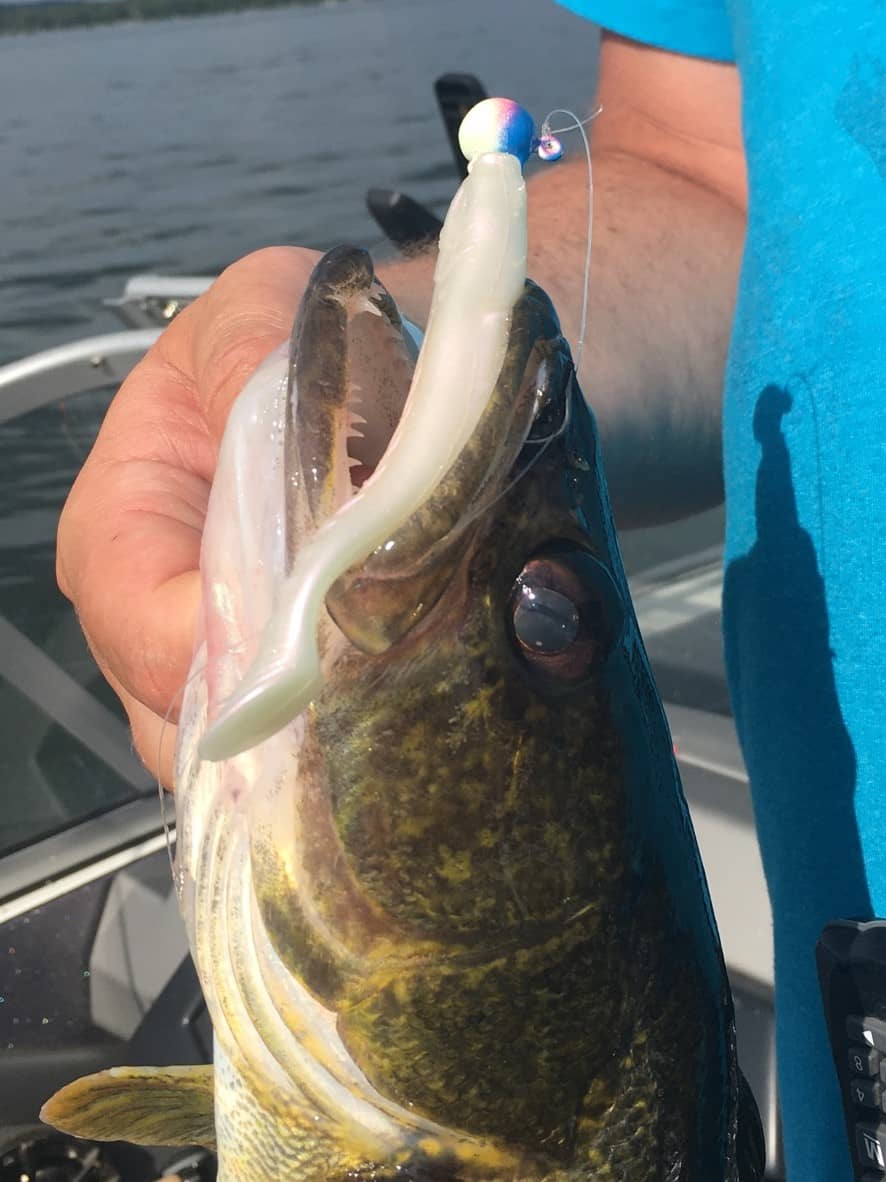
Whether fishing walleyes, crappies or just about any other fish that will take a jig, tying directly to it, checking shank integrity and inspecting the hook point are three key little things that will pay big dividends. Simonson Photo.
By Nick Simonson
Success in fishing, as in life, comes down to doing the little things right. If you’re not familiar with the cautionary tale dubbed “for want of a nail,” it’s well worth the ten second read in any of its poetic forms. The base lesson is that due to missing the smallest detail regarding the securing of a horseshoe, a battle and ultimately a war is lost. The same can be said for the smallest details in angling, and one of the smallest but most effective offerings in a tacklebox is the jig. Knowing how to utilize one – whether fishing for walleyes, bass, panfish or any other of a hundred species this most versatile lure can be used for – and the little details surrounding it will make winning the battle against any fish easier and more successful.
Direct Connection
I’ve seen my share of odd connections to jigs. Snap swivels, oversized metal leaders, and other hardware between line and lure are not uncommon, however, in most cases they are not only unnecessary but a detraction to a jig’s effectiveness. I’m not saying from time to time that there isn’t a need for a leader of some sort – say when fishing pike or muskies and tossing bigger jigs with plastics – but in most cases, to be effective, a jig should be tied directly to the line. Utilizing a palomar knot or an improved clinch knot, with the former being the best bet for strength and the latter being slightly better in terms of knot positioning and a bit more finesse in motion, line should be the only connection.
Bent Out of Shape
Jigs take their share of abuse, and after a few dozen fish and a few hundred trips through the underwater mine field of rocks, timber, dock posts and other obstructions, the hook shank and the curve ahead of the point can become bent. Whether that’s from being loosened from snags with a hard pull or loosened from a fish’s jaw with the twist of a pliers, jigs can get bent out of shape fairly easily. While two or three such reshapings are fine, at some point the J-shaped turn in a jig starts to look more like a U-shape and that’s when a jig should be discarded. Simply cut the old one loose and tie on a new one when things need a change.
Get the Point
Finally, along with the bends and dings the jig’s hook shank takes, the point of a jig can get easily blunted from rocks and other hard contact under the water. Keep a close eye on the hook point of a jig to check for bending, blunting or other damage that can reduce the effectiveness of the angle on a hookset. Utilize a hook hone to be certain points are sharp out of the box, or to refine a jig’s point after it has been on the line awhile. If a point gets too dull, cut the jig and tie on a fresh one to ensure a solid hook set.
These three simple tips might seem small, but they can mean the different between turning fish off with unnecessary hardware and losing a fish due to a bad hold in the hook shank or missing a hook set altogether. Keep each jig-based battle on the water tilted in your favor and you’ll nail down more memories this spring and all openwater season long.
